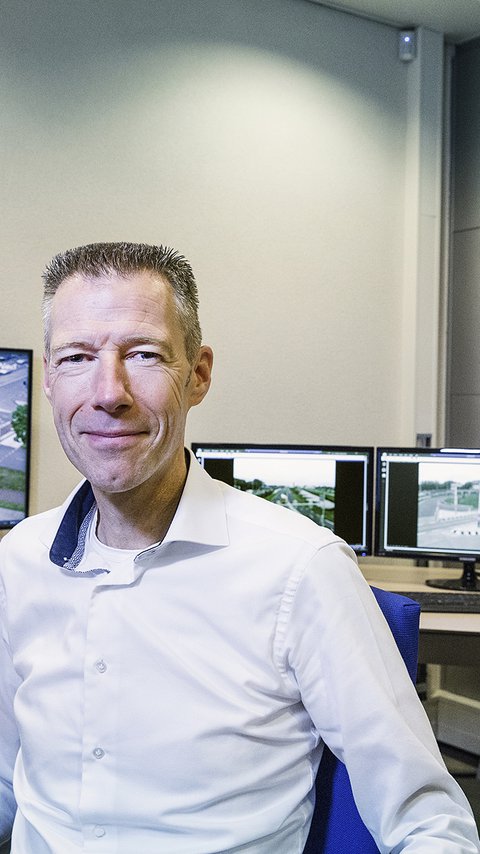
Digitization is everywhere, even on the motorway. Smart vehicles will soon be communicating with infrastructure, which in turn will communicate with road users and road authorities through road traffic management. However, we're not there yet. Indeed, there’s a proliferation of data and sensors. How do you go about combining this tangle of data to create reliable information for road users? We ask René Valkenburg, Director of Heijmans Systeemintegratie en Techniek.
1. Will digitization improve our mobility? Will there eventually be fewer traffic jams?
"I anticipate that we’ll eventually know the best time to travel from A to B. Smart vehicles - autonomous vehicles, in due course - and smart roads will enable safety to be improved and ensure that traffic density can be distributed more evenly, hopefully therefore reducing the incidence of traffic jams and reliable journey times. Intelligent software will convert data from all (road) users and the roads themselves to produce useful, reliable information which can be read on a tablet-like device’s screen in the vehicle. In a decade’s time we won’t know any different. Then you’ll get a notification from your agenda on your device stating what time you need to leave in order to arrive at your appointment exactly on time. The first steps are already being made now. In the case of the new Tesla, for example, you can choose to order extra sensors which can be used to activate the aforementioned function.
Incidentally, the digitization of our infrastructure started years ago with the introduction of the dynamic traffic management system, recognizable to road users as the dot matrix signs over the road."
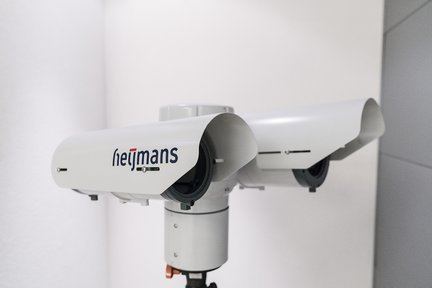
Among other benefits, digital systems also make our tunnels safe. Consider in this regard cameras, public address systems and intercom equipment. Lurking behind these systems are many miles of cabling, complex computer servers and software platforms. The systems we have developed in-house can be operated for each tunnel in decentralized fashion from the traffic centre or locally at the tunnel itself. We flag up and remedy technical faults remotely from our service centre in Eindhoven. In many cases the road traffic manager won’t notice this fault, because we have already remedied it remotely. This prevents tunnels being closed for protracted periods and the accompanying delays, and it contributes to increasing system uptime. Our software system is currently operating in the Keteltunnel, Salland-Twentetunnel, Markt-Maastunnel and the five national traffic centres run by Rijkswaterstaat.
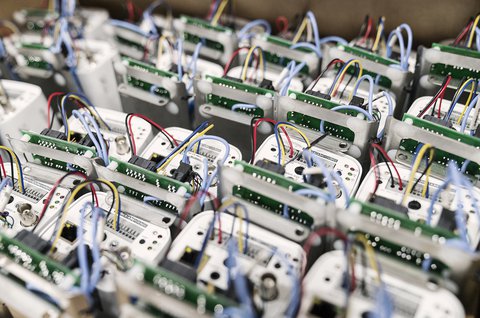
Digitization is also helping us when it comes to efficiently predicting structural maintenance. Sensors on bridges and in buildings, for instance, are continuously amassing data on such things as displacement, temperature, corrosion, the forces in civil engineering projects and supports or expansion joints.
The threat of failure or extreme wear and tear are flagged up in timely fashion. And we’re on it straight away. Preventive replacement of a worn component prevents unexpected repair work, like in the case of the emergency repair of the Merwedebrug on the A27 in 2016.’
2. What digital innovations make you really happy?
‘We are currently developing sensors that measure CO2 values in urban environments, for instance. By diverting traffic flows (in the event of excessive values), you can level out the CO2 emissions over a wider area. Or the Smart City concept. We use intelligent street lighting and sensors to measure things like noise level, air quality, temperature and traffic density. The lights are dimmed when it’s not busy on the roads. When a pedestrian, cyclist or car passes, then the lighting is turned up. Intelligent street lighting combines energy-saving measures with safety measures.
In addition, we’re running a pilot with various sensors which measure the environmental condition in the central technical spaces of such parties as Rijkswaterstaat, in which the active network equipment is located. Thus enhancing the uptime and therefore the reliability of the traffic management systems on our motorways.
On the A58 between Tilburg and Breda we’ve tested a system (in conjunction with various market parties) with which we are hoping to combat phantom jams. Based on floating car data, personalized information is sent to road users’ navigation apps, such as what speed they will need to drive in order to avoid ending up in the tail end of the jam. This technology looks over the traffic jam, as it were.’
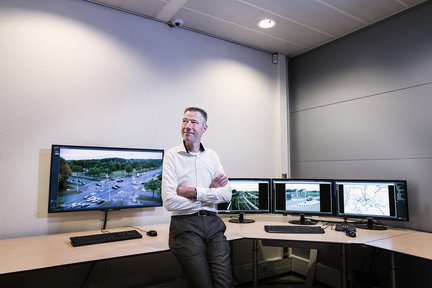
3. Sounds promising. What's the key to success?
‘Internally there needs to be adequate interplay between business development, product development and product management. An open mind towards the outside world is also important. What will intelligent infrastructure look like in ten years’ time? The right answer will only be found through cooperation with partners, such as tech firms, the car industry and the telecom sector. Co-creation and cooperation are essential. There’s a proliferation of sensors and loose data at present. Barely any cohesion.
There’s a proliferation of sensors and loose data at present. Barely any cohesion
What will determine your success is how you most efficiently combine data and convert it into reliable information. Our aim is to develop future-proof infrastructure, with technical innovations that will serve us for at least ten to fifteen years. To that end, we’ll have to sacrifice a lot of sacred cows.’
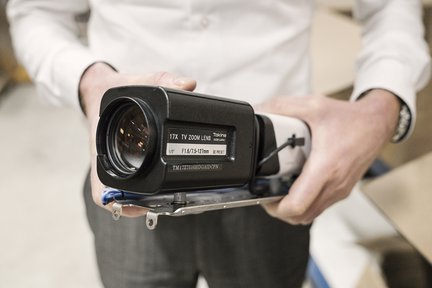
4. What sacred cows?
‘The government could help by investing more in digital innovations. After all, nobody can finance this from his own pocket. The Dutch market has a limited scale, you see. And there’s no possibility of earning back the development costs on one or two projects, as that would price you out of the market in tenders. You want to keep innovating and at the same time implement profitable projects. There’s the rub: predictability based on proven technology versus new developments. This is always a source of conflict within projects characterized by time pressure. To say nothing of how you deal with intellectual property (IP) of systems or services developed. There’s work to be done in this regard for trade associations as well.
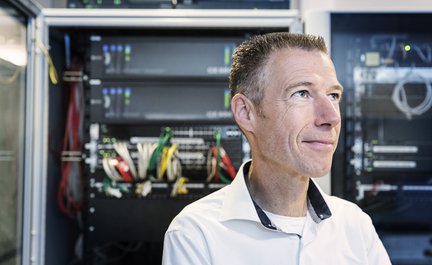
At present, all innovations are an investment in the future. We’re not yet earning any money from them. Finding a new revenue model is extraordinarily difficult. The consumer driving his car on the road network each day can’t spare any money for data-driven online dashboards or apps. By contrast, clients, road authorities and professional road users such as the transport and logistics sector do have an interest. Which is why over the next few years we’ll be looking for new revenue models on the basis of data-driven platforms for the aforementioned public and private clients. For the time being, ascertaining both our position and our market potential is still pioneering work.’
5. That two billion euros for infrastructure in the new coalition agreement isn’t enough?
‘It’s great, of course, but the digital transition of the infrastructure will only succeed if the government gives market parties sufficient elbow room to develop digital solutions and experiment with these. Most contracts are currently signed on the basis of functional requirements, where there’s scarcely any room for new ideas, let alone making mistakes in order to ensure you continue developing yourself.
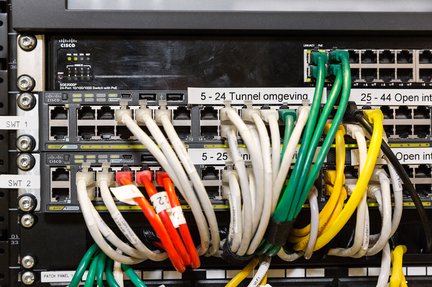
Fortunately there’s an increasing number of clients challenging the market to come up with solutions that won’t be created by viewing things from an orthodox perspective. I myself am a member of the board of Smart Infra trade association ASTRIN, where both standardization and ways of cooperation occupy centre stage. In the capacity of Heijmans, we’re extremely keen to stick out our necks, but then there needs to be a genuine prospect of us being able to market the solutions we’ve developed more widely. Clients and road authorities need to overcome their timorousness. Invest and give us the space we need, which will ensure that the Netherlands remains in the vanguard of smart mobility in Europe!’
Contact us

